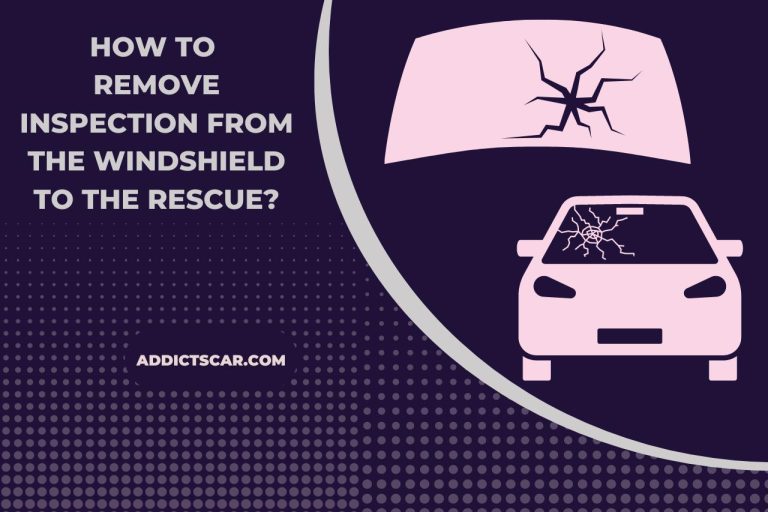Check Brake Pad Wear In A Mercedes: Easy Inspection
Every Mercedes owner has a responsibility to maintain the health of their brake pads because effective braking is a critical component of vehicle safety. In addition to ensuring peak performance, routine brake pad wear checks also add to the overall durability of your car. This article will show you how to check brake pad wear In A Mercedes, giving you the knowledge, you need to maintain both your safety and the performance of your high-end vehicle.
By regularly checking the brake pads on your Mercedes, you can be sure of their health and take care of any wear indicators before they endanger your ability to stop safely. The safety of you, your passengers, and other road users is prioritized when you include brake pad examination in routine maintenance.
How Frequently Should I Inspect The Condition Of My Mercedes’ Brake Pads?
It’s essential to perform routine brake pad inspections to maintain the functionality and safety of your Mercedes. Consider examining them more frequently in these circumstances, roughly every 6,000 miles. Your brakes will work harder if you frequently travel in places with high hills or drops.
This may result in faster wear and more frequent inspections. Brake pad wear can be accelerated by aggressive driving combined with frequent harsh braking. Consider examining your brake pads more frequently if you have a tendency to brake abruptly and repeatedly.
The lifespans of various brake pad materials vary. For instance, brake pads designed for performance may deteriorate more quickly than ordinary brake pads. To learn more about the particular brake pad material in your car, check your owner’s handbook or talk to a professional.
Pay heed to the warning light on your dashboard if your Mercedes has brake pad wear sensors. Your brake pads are approaching their minimal thickness when the sensor triggers, meaning they need to be checked out soon.
What Are The Telltale Symptoms That My Mercedes Needs New Brake Pads?
- When you apply the brakes, a high-pitched squeaking or squealing sound is one of the most obvious symptoms. This noise is often produced by a tiny metal indicator that is integrated into the brake pad and is intended to sound when the pad wears to a specific level.
- When your brakes make a grinding noise, your brake pads have likely worn down severely and the metal backing is now in direct contact with the brake rotor. Damage to the rotors and poor braking performance may result from this.
- Your brake pads may be worn thin and not generating enough friction if you find that your brakes are not as sensitive as they once were or if the braking distance has risen.
- When you press the brakes, the brake pedal may vibrate or pulse, which may be an indication of uneven brake pad wear or a warped brake rotor. This may have an impact on braking performance as a whole.
- Brake pad wear sensors are a common feature of contemporary vehicles, including Mercedes-Benz models. A warning light will turn on your dashboard if the brake pad wear sensors determine that your brake pads have reached a minimum thickness. Through the gaps in your wheel spokes, you may visually check your brake pads.
- Brake pads that have not yet been worn appear thinner than those that have. It’s time for a replacement if you can see that the pad material is at or almost at the thickness of the metal backing.
How Do I Visually Check The Brake Pads On My Mercedes For Wear?
- Set the parking brake in motion as you position your Mercedes on a level surface.
- Carefully remove the wheel that is covering the brake parts using the proper tools. You will be able to see the brake assembly clearly as a result.
- Examine the brake pads visually via the gaps in the wheel spokes. You should inspect each wheel’s inner and outer brake pads. The friction material that presses against the braking rotor is the brake pads.
- Contrast the metal backing plate’s thickness with that of the brake pad material. While worn brake pads will appear thinner, new brake pads have a pretty thick layer of material. It’s time to replace the pads if the pad material is at or nearly at the thickness of the backing plate.
- Examine the brake pad surfaces for any indications of uneven wear, cracking, or deterioration in addition to thickness.
- Uneven wear may be a sign that your brake system needs maintenance. Take a brief glance at the braking rotor while you’re checking the brake pads.
The rotor should have no obvious scoring or deep grooves. If the rotor has sustained severe damage, it may require resurfacing or replacement. Repeat the check procedure for each of your Mercedes’ four wheels.

Can I Just Use The Wear Indication Light To Determine When To Change My Brake Pads?
The wear indication light in your Mercedes can help you know when to replace your brake pads. Brake pad wear sensors are a common feature of contemporary vehicles, notably numerous Mercedes models. These sensors keep track of the brake pads’ thickness. These sensors cause a dashboard warning light to turn on when the brake pads reach a specified amount of wear.
When it’s time to change your brake pads, you can easily and reliably tell by the wear indication light on your vehicle. When this light comes on, the brake pads are at a minimal thickness and need to be checked and replaced right away in order to ensure the best braking performance and safety.
It’s crucial to remember that the wear indication light is a warning mechanism and shouldn’t be disregarded. It is advised that you immediately have your brake pads checked by a qualified mechanic if you notice the light turn on. Waiting too long to replace worn brake pads can result in decreased stopping power, longer stopping distances, and even possible rotor damage.
While the wear indication light is a useful tool, it’s also a good idea to visually check your brake pads on a regular basis, particularly if you notice any unusual noises or symptoms when you brake. This might give another level of assurance and encourage you to be proactive about your car’s maintenance requirements.
How Do I Use The Brake Pad Wear Indicator On My Mercedes?
Upon reaching a specific amount of brake pad wear, a dashboard warning light will come on. The brake system is symbolized by this light, which often looks like an exclamation point enclosed in a circle. It might have the text “BRAKE PAD” or “BRAKE WEAR” next to it.
The brake pad itself contains the wear indicator. In the substance of the brake pads is a tiny sensor or wire. This sensor or wire goes nearer to the braking rotor as the brake pad degrades. The moment it makes contact with the rotor, an electrical circuit is completed, activating the dashboard warning light.
The brake pad wear indicator light on your dashboard signals when at least one brake pad has reached the minimal degree of wear. It’s crucial to heed this warning since driving with extremely worn brake pads can jeopardize your safety and stopping ability.
When the brake pad wear indicator light illuminates, it’s important to have a skilled mechanic check your brake pads. They will evaluate the state of each brake pad and, if necessary, suggest replacement. To ensure optimal braking performance, the mechanic will install new brake pads if the brake pads are in fact more worn than is advised.
Here’s An Interesting Video To Watch,
VIDEO CREDITS: Amazing Road TV YouTube Channel
You May Also Like







